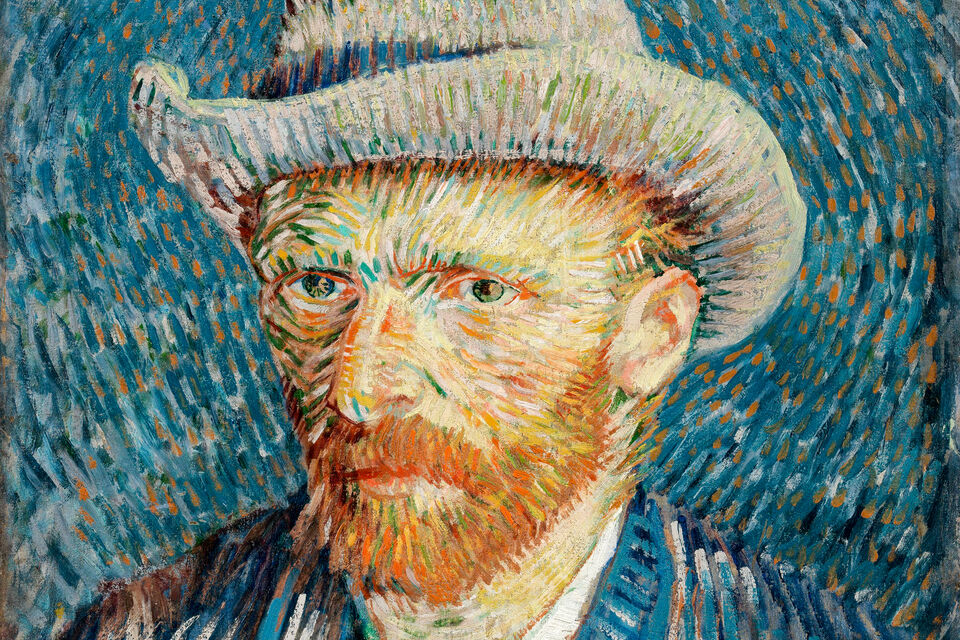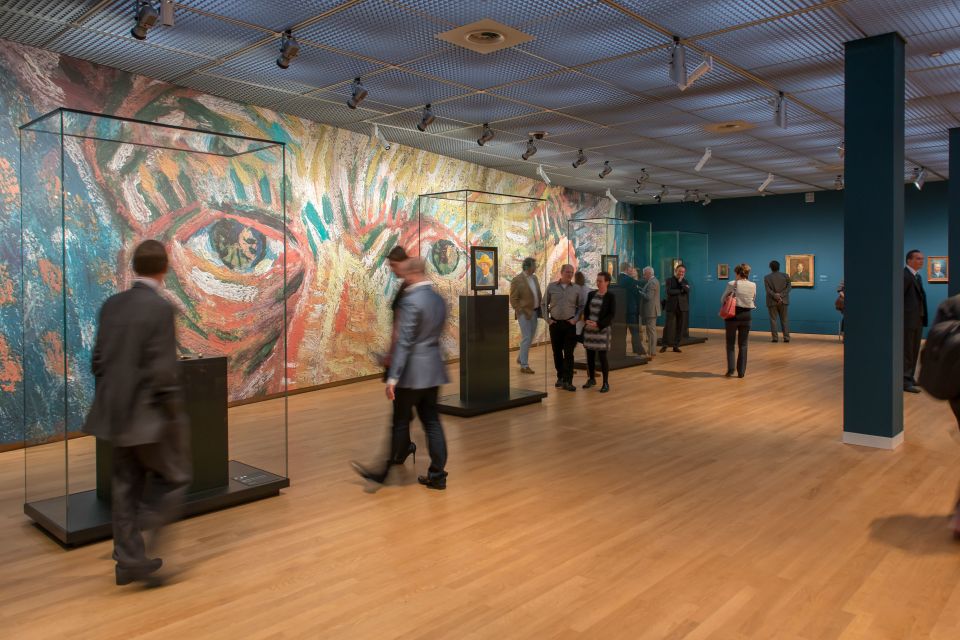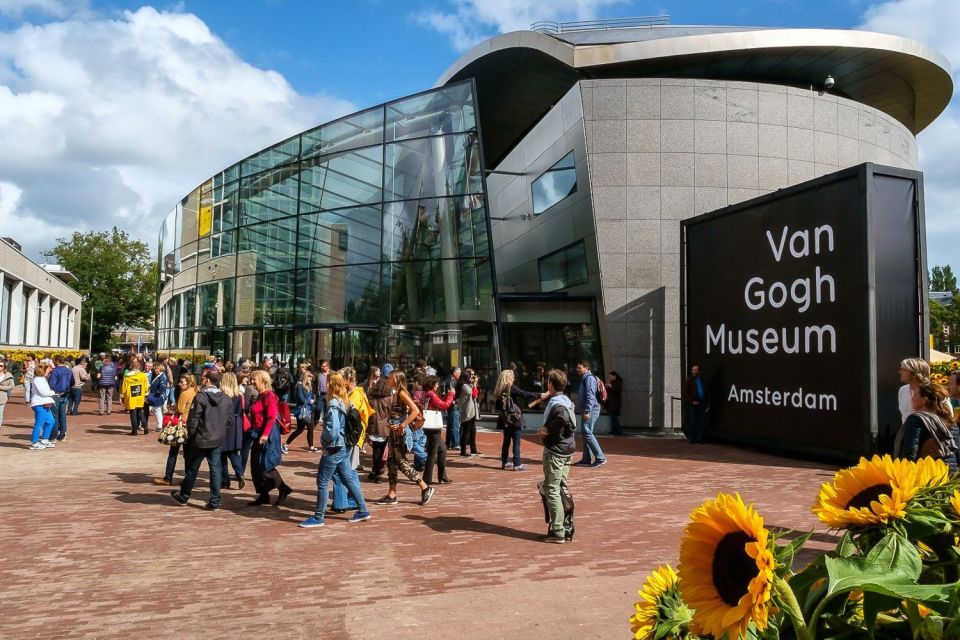Vincent Van Gogh
Explore The Museum
Vincent van Gogh, the eldest child of a Dutch Reformed servant and the daughter of a bookseller, had a varied career before deciding to become an artist at the age of 27. Throughout his career, which lasted from 1880 to 1890, he produced nearly 900 pieces of art and over 1100 sketches on paper. In 1890, he considered his artistic legacy to be “exceptionally helpful” in meaning.
Van Gogh gained artistic proficiency by studying prints and focusing on the 19th century drawing manuals and illustration books, such as Charles Bargue’s “Exercises au fusain” and “Cours de dessin.” In 1882, he moved from his hometown of Etten to The Hague, where he received traditional training from his cousin Anton Mauve, a prominent member of the Hague School. That same year, he began creating his most notable independent works in watercolour and switched to oil painting. He also had his first commercial success as an artist, when his uncle, the artist Cornelis Marinus van Gogh, commissioned him to create two drawings of The Hague, which Van Gogh chose to depict everyday subjects such as views of the railway station, gasworks, and nursery gardens.
When he chose to paint rural life, Van Gogh was inspired by his admiration for Barbizon painters, particularly Jean-Francois Millet. During the colder months of 1884-1885, while living with his family in Nuenen, Van Gogh painted over 40 studies of the heads of workers, culminating in his first large-scale multi-figure painting, “Potato Eaters” (Van Gogh Museum, Amsterdam). The painting’s subdued tones and rough use of colour characterize the works of his Nuenen period.
In an effort to improve his figure painting skills, Van Gogh left the Netherlands in late 1885 and studied at the Antwerp Academy in Belgium for 90 days. He then moved to Paris to live with his brother Theo, who worked as a salesman for art supplies at Boussod, Valadon et Cie. He also took classes at Fernando Cormon’s studio while in Paris.
During his two-year stay in Paris (February 1886-February 1888), Van Gogh’s style underwent a significant change. He saw firsthand the works of the Impressionists and the latest developments of the Neo-Impressionists Georges Seurat and Paul Signac. As a result, Van Gogh expanded his approach and experimented with the broken brushstrokes of the Impressionists and the pointillist style of the Neo-Impressionists, as seen in his self-portrait with a Straw Hat (67.187. 70a). He created more than twenty self-portraits during his time in Paris, which reflect his ongoing exploration of different contrasts and a bolder style.
In October 1888, Van Gogh was joined by Paul Gauguin in Arles. However, Gauguin unexpectedly left in December, prompted by Van Gogh’s breakdown, during which he cut off a piece of his left ear with a razor. After recovery in January, Van Gogh continued to paint the family of the postmaster, Joseph Roulin. Although he painted all members of the Roulin family, Van Gogh created five versions of Madame Roulin, depicted as La Berceuse, holding a rope that rocks her baby (1996.435). He envisioned her portrait as the centrepiece of a three-panel painting, with sunflowers on either side. Van Gogh believed that her painting transcended representation and symbolically represented the ultimate Madonna. He used a range of colours, from ocher to vermilion and malachite, to express his desire to “sing a children’s song with variety” and emphasized the expressive use of colour in his art.
Fearing another episode of mental instability, Van Gogh voluntarily entered an asylum in Saint-Rémy in May 1889, where he painted around 150 canvases over the next year. His confinement to the hospital grounds is reflected in his paintings, from depictions of its corridors (48.190.2) to the irises and lilacs of its walled garden, visible from the window of the room he used as a studio.
He also ventured outside the hospital grounds to paint the surrounding landscape and dedicated a series to the olive groves (1998.325.1) and cypress trees, which he considered to be characteristic of Provence. In June, he created two paintings of cypress trees, using thick layers of paint (49.30; Cypresses, Kröller-Müller Museum, Otterlo). In a letter to his brother Theo, he compared the shape of the cypress to an Egyptian obelisk. These evocative trees also figure prominently in another painting he created that month (1993.132). Van Gogh considered this work, a sunlit wheat field billowing in the wind, to be one of his “best” summer paintings. At Saint-Rémy, he also created copies of works by other artists such as Delacroix, Rembrandt, and Millet using black and white photographs and prints.
In the autumn and winter of 1889-90, he created 21 copies after Millet (64.165.2) and referred to them as “interpretations” and “translations” of the original works, comparing his role as an artist to that of a musician performing someone else’s work. As a final series, similar to the sunflower paintings he created earlier in Arles, he painted four bouquets of irises (58.187) and roses (1993.400.5) in the asylum during his last week.
As a result of his year in Saint-Rémy, in May 1890, Van Gogh moved to Auvers-Sur-Oise, where he was closer to his brother Theo in Paris. There, he also received the care of Dr. Paul Gachet, a homeopathic physician and amateur painter.
In just over two months, Van Gogh produced an average of one painting per day. However, on July 27, 1890, he shot himself in the chest in a wheat field and died two days later. His artistic legacy is preserved in the paintings and drawings he left behind, as well as in his extensive correspondence, particularly with Theo, which provides insight into his working methods and artistic intentions and serves as a reminder of his brother’s crucial role in supporting him throughout his career.
At the time of his death in 1890, Van Gogh’s work had started to receive critical attention. His paintings were exhibited at the Salon des Indépendants in Paris from 1888 to 1890 and at Les XX in Brussels in 1890. As Gauguin wrote to him, his recent works that were on view at the Indépendants in Paris were considered by many artists to be “the most remarkable” in the show, and one of his paintings was sold from the 1890 exhibition in Brussels.
In January 1890, critic Albert Aurier wrote the first extensive article on Van Gogh, connecting his art to the emerging Symbolist movement and highlighting the originality and intensity of his artistic vision. After the outbreak of the First World War, the Fauves and German Expressionists recognized his talent and he was already considered a prominent figure in the history of modern art.



